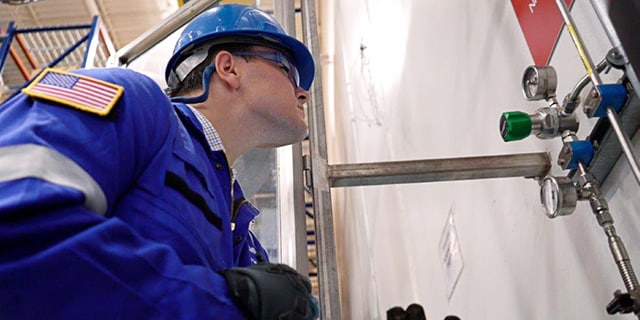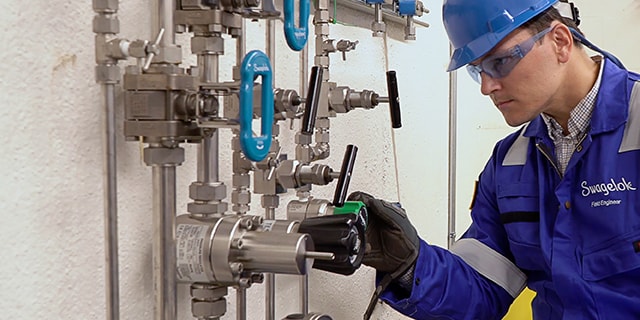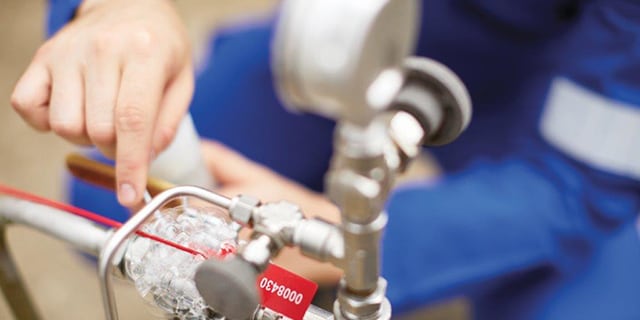Cut Maintenance Costs with Enhanced Gas Panels

How to Reduce Your Maintenance Spend by Improving Gas Distribution
Mark Welch, Regional Field Engineer, Swagelok London
For a maintenance technician, servicing a gas pressure control panel can often be like solving a puzzle.
Confusing or unintuitive tube or pipe layouts may block easy access to components requiring attention. Several threaded connections might require disassembly for service, followed by remaking upon completion of the task. An unlabeled valve or regulator may leave the technician uncertain how to choose a replacement.
All of this can be time-consuming, labor intensive, and thus, costly work—but it is all necessary for chemical plants or laboratories that require widespread distribution of various gases to conduct their operations. System reliability is imperative. Operations can be dramatically slowed down or even stopped if gas is not available when and where it is needed.
Learn about gas distribution solutions in this video:
Optimized Gas Panel Design = More Intuitive Operation and Maintenance
Traditionally, gas panel design has been far from intuitive. Componentry that often requires regular service—safety relief valves and regulators being two of the most common examples—might be hidden behind an enclosure or blocked behind tubing that must be disassembled in order to gain access. Some of these design choices may also make it difficult for a technician to interpret how the gas panel operates, inhibiting his or her ability to properly service the panel. All of this can lengthen the amount of time required to complete maintenance.
Operations can be dramatically slowed down or even stopped if gas is not available when and where it is needed.
Consider also that while service is being performed, the supply of gas is cut off to its point of use. This kind of downtime means that production or testing cannot continue until the task is complete and the panel has been reassembled and turned back on.
Newer gas panels featuring an optimized design can alleviate some of these maintainability concerns. Look for panels that feature clear visibility and labeling of critical components like regulators and pressure valves. Modular designs allow a technician to swap out components more easily via tube fitting connections so the entire panel itself can remain in place while being serviced. Your gas panel supplier should also take your specific needs into consideration and offer a configuration that works best for your operation.
Stronger Connections = Fewer Leaks
In addition to being easier to maintain and reassemble than threaded connections, tube fittings can also form a more robust connection that can eliminate small, unnoticed leaks that may add up to considerable costs over time.
Consider nitrogen, a utility gas used for dozens of different purposes in laboratories, refineries, and other facilities. A small nitrogen leak may not be considered an immediate safety hazard, but the escaping gas can be expensive over a longer amount of time. Numerous small nitrogen leaks throughout a system can result in the operator paying for gas that is wasted as it escapes the system. For more expensive gases, these leaks are even more important to identify and eliminate.
Checking for small leaks throughout a gas distribution system, however, is not always a top priority for a facility operator. There are dozens of other priorities that might take precedence on a given day. Selecting high-quality tube fittings at different connections throughout a gas distribution system can be beneficial, offering reliable, leak-tight performance for the long term. Better yet, working with a components supplier who can offer evaluation services and actionable insights to achieve more efficient gas distribution can offer even bigger benefits.
Quality Parts = Fewer Interruptions
Gas panels and systems made from high-quality individual components can help drive down maintenance-related labor costs, as well.
For example, regulators—the devices that reduce gas pressure in gas from its source for use at the next step in the system—are often the subject of scheduled replacement. Conventional wisdom states that most regulators should be replaced every five years, depending on the build quality. It is also common practice for regulators to be provided by your gas supplier. Following a schedule like this is not typically questioned. After all, swapping out a regulator rated for five years of use when necessary should help prevent performance issues, though doing so requires downtime and interrupted production.
However, not all available regulators are created equal. Higher-quality pressure regulators that have been tested and rated for millions of cycles can last the lifetime of your gas distribution system, functionally eliminating the need for periodic replacement and the associated labor required to do so. Regulators designed to a higher standard can help you keep producing with fewer interruptions (and less associated downtime) while offering peace of mind regarding your system’s performance and safety.
For many labs, refineries, and other facilities, gas distribution and delivery systems represent a significant opportunity to achieve greater efficiencies and maintenance-related cost savings. To learn more about the benefits that modern gas panels provide, and how advisors who specialize in gas distribution can help you reduce your operating costs, start a conversation with us today.
Related Articles

Improve Gas Distribution Safety and Efficiency
Gas distribution systems are crucial for helping labs, test centers, and industrial facilities operate at peak efficiency. Learn more about optimizing gas delivery system health and safety, reducing costs, and equipping your team for success.

Q&A: How to Optimize Your Gas Distribution System
Learn about common challenges that can hamper the safety and efficiency of important gas distribution systems and how a professional evaluation of those systems can provide long-term value.

Identifying Cost Savings in Utility Gas Systems
See how Swagelok Texas Mid-Coast provided on-site analyses of a major petrochemical producer’s aging utility gas system and uncovered savings of more than $2 million annually.

